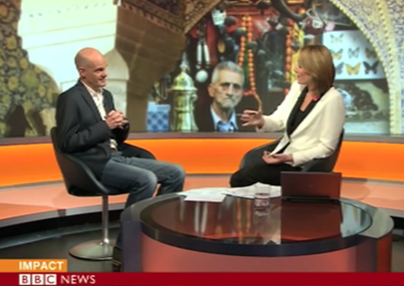Aim: Develop listening skills for gist and detail, work on decoding speech stream
Where the lesson came from:
Taking a well-deserved break from our computer screens, we went out on a delightful daytrip to the Priorat region in Catalunya. Fresh air, olive oil tasting, hiking, food, wine – lovely stuff. Part of the trip included a tour of an olive oil co-operative. Our eyes were delighted by conveyor belts, threshing machines, big steel vats while our ears were bombarded with descriptions of processes, facts, numbers and statistics. It was all rather reminiscent of an IELTS test (other proficiency tests are available). I spoke about this at IATEFL in Birmingham this year – you can find the slides here.

The lessons from learning we took from this olive oil process listening were:
- The importance of pairwork (surprise surprise!)
- L1 use was, er, useful
- pretask: raising our awareness of the process by googling olive oil production on our phones before the visit
- during task: guessing translations, comparing ideas
- and post-task: when researching and recording vocabulary.
- We wanted to learn new words and were motivated to follow up with self-set study of vocabulary
- We had a desire for many repetitions – not always satisfied
- We had two basic questions:
- What did she just say?
- What does that mean?
This fed into how I next taught a listening class.
The most important lesson from learning above was probably the fifth. Instead of comprehension questions, these two key questions – What did (they) say? What does that mean? – would guide the process. Since this was a class and not real-life, there were naturally some differences. There would be opportunity for repeat listenings, and this was to be dictated by the students themselves asking for repetitions of sections they wished. Another key difference was the dramatic reduction of a pre-listening stage. In order for the students to attend to decoding the speech stream, I didn’t want to build context up so much that it negated any need to actually listen to the text. The lead-in to the listening itself was just a picture of two people. I told the students they’d just switched on the TV and seen this image and to guess what they were talking about. Here it is:

What do you think?
My students variously gave ‘nuclear weapons’ ‘terrorism’ ‘refugees’
Watch the clip here.
(It’s about tourism in Iran)
Procedure:
- Students listen and tick how many subtopics they notice – this isn’t fixed – it could be 2, it could be 5, it’s up to the listeners.
- Students compare ideas then listen again – this time naming the subtopics.
- Students compare and listen a third time, noting down with symbols where they want to listen again, or when they’re not sure they understood.
- Students compare and request specific subsections to be repeated.
- Teacher instructs students to transcribe specific short sections – utterances of up to 10 words.
- This may take many repeats. The teacher can slow down the recording here (use VLC to do this) or read from the tapescript – being careful to retain features of connected speech, but can still slow down the rate of speech. Other teacher support options are giving the number of words (helping sts to ‘segment’ the speech stream), giving first letters of said words and so on. Once students have the ‘answer’ it’s a good idea to play the original video again at original speed so they get a chance to ‘hear’ it.
- Once your listeners have had a thoroughly good listening workout and are looking a little tired (which may take longer than you would suspect) move on to a post-listening task of your choice. This particular lesson lent itself well to discussion tasks around the topic of tourism and a kind of replication task where students applied the interview questions / subtopics to their context – in our case tourism in Barcelona.
Here’s a more visual run-through:
We trialled this proforma and sequence with a few different classes. The video was engaging and the learners were very keen to transcribe the actual words they heard – even if they were comfortable with the gist and detail – they really wanted to get to grips with decoding.
We also tried out the proforma and lesson sequence ourselves, using a short Spanish language video about Mexican culture, painting and so on (not a topic I know a lot about). This led to a refining of the original proforma, so if you want to try out this sequence, you can download the documents here.
Finally, some key reflections from this first lesson:
- The text can be very challenging, but with adequate support, needn’t be demotivating.
- Learners need a little ‘training’ in how to use the proforma. Clear instructions about noting subtopics etc are vital. I always used a football example: If the main topic is ‘Football’ (again, not a topic I know a lot about), subtopics could be ‘Teams’ ‘Man of the match’ ‘League position’ etc.
- Listeners are happy to repeat a small chunk MANY times, but eventually will need ‘the answer’. For ourselves, this was the transcript of the Spanish video. For our students this came in the form of teacher support – see point 6 in the procedure above.
- Reminding your class to be silent when transcribing is happening is important.
- One minute is plenty for intensive study like this.
- ‘Ghostwords’ were a common sticking point requiring teacher support. For the Iran listening, ‘we’ve seen a rise, first of all this year’ led many listeners to hear ‘festival’ This is one that really benefits from classroom focus, as it crops up frequently. Focussing on high frequency chunks like this is clearly helpful. Incidentally, we had the same problem with the Spanish listening – where ‘llego a ser’ was heard ‘something(?) hacer’. This relates to something Richard Cauldwell has called ‘the decoding gap‘.
- Accent can cause problems. For this lesson, the presenter’s pronunciation of one key word – Iran – caused one of the classes great difficulty. In this lesson, immediate teacher support was useful, but it highlighted the need for a focus on accent. ‘Tuning in’ to accent can be a useful activity (e.g. having listeners hear the speaker for a period of time before actually conducting any comprehension work – an idea picked up from Annie McDonald’s IATEFL talk from last year.
Listening proforma: Click here to download
Click interview transcript to download



Nice one! The students should ask for clarification on meaning on what they don’t understand, not the teacher checking comprehension. Is that your main point?
LikeLike
Hi Mark, thanks for stopping by! I’ll have to get back to finishing this series! Yes, the main take-away for me on this lesson was to allow the students to decide what sections they wanted repeating. Coupled with that there’s the focus on transcription, with the eventual aim (over a series of lessons or self-study) of making the decoding process automatic (and so freeing up the mental space for meaning making to happen).
LikeLiked by 1 person
Hi Shaun, thanks for getting back to me. I’m in the process of changing how I think about listening. Decoding the speech stream is a fascinating area. Thanks for the post.
LikeLike
love it!
LikeLike